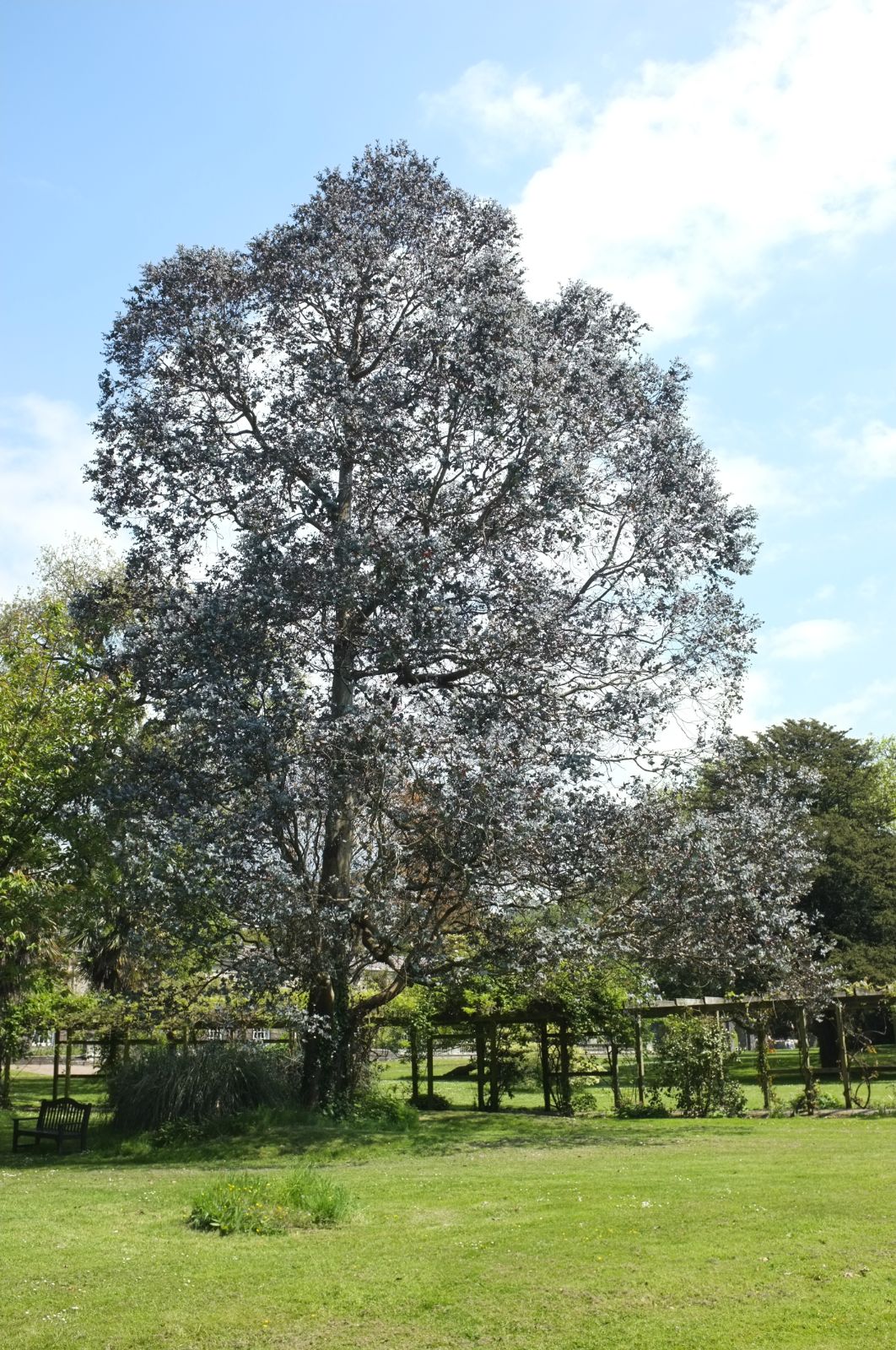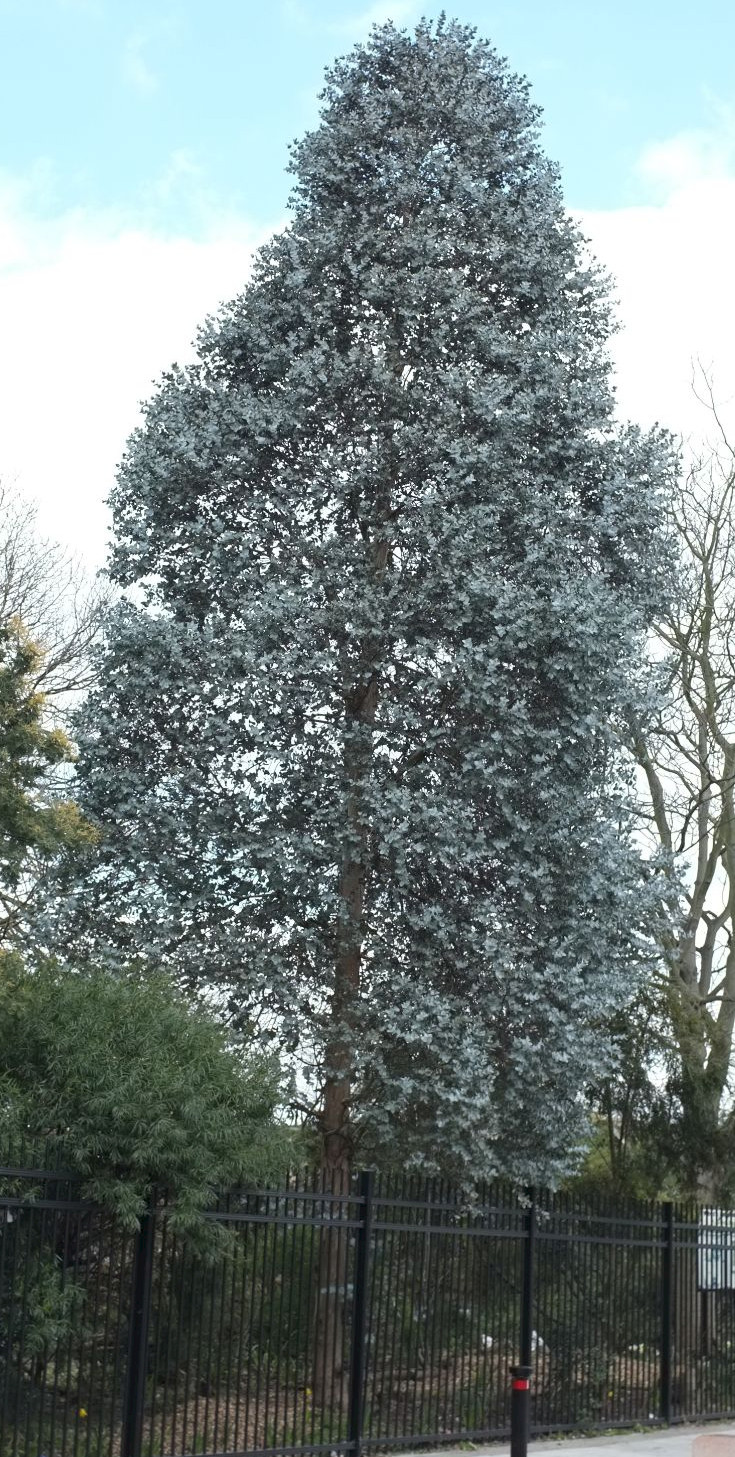Eucalyptus cordata
Credits
Article from Bean's Trees and Shrubs Hardy in the British Isles
Recommended citation
'Eucalyptus cordata' from the website Trees and Shrubs Online (treesandshrubsonline.
Genus
Common Names
- Silver Gum
Other taxa in genus
- Eucalyptus acaciiformis
- Eucalyptus albida
- Eucalyptus amygdalina
- Eucalyptus archeri
- Eucalyptus blakelyi
- Eucalyptus bridgesiana
- Eucalyptus brookeriana
- Eucalyptus camaldulensis
- Eucalyptus camphora
- Eucalyptus chapmaniana
- Eucalyptus cinerea
- Eucalyptus coccifera
- Eucalyptus crenulata
- Eucalyptus cypellocarpa
- Eucalyptus dalrympleana
- Eucalyptus delegatensis
- Eucalyptus elliptica
- Eucalyptus fastigata
- Eucalyptus fraxinoides
- Eucalyptus globulus
- Eucalyptus gregsoniana
- Eucalyptus gunnii
- Eucalyptus johnstonii
- Eucalyptus kybeanensis
- Eucalyptus lacrimans
- Eucalyptus laophila
- Eucalyptus leucoxylon
- Eucalyptus macarthurii
- Eucalyptus macrorhyncha
- Eucalyptus mannifera
- Eucalyptus melliodora
- Eucalyptus mitchelliana
- Eucalyptus moorei
- Eucalyptus morrisbyi
- Eucalyptus neglecta
- Eucalyptus nicholii
- Eucalyptus nitens
- Eucalyptus nova-anglica
- Eucalyptus obliqua
- Eucalyptus oreades
- Eucalyptus ovata
- Eucalyptus parvula
- Eucalyptus pauciflora
- Eucalyptus praecox
- Eucalyptus radiata
- Eucalyptus regnans
- Eucalyptus remota
- Eucalyptus risdonii
- Eucalyptus rodwayi
- Eucalyptus rubida
- Eucalyptus saligna
- Eucalyptus sideroxylon
- Eucalyptus stellulata
- Eucalyptus subcrenulata
- Eucalyptus tenuiramis
- Eucalyptus urnigera
- Eucalyptus viminalis
A tree to about 50 ft high; bark smooth, white or greenish white; young shoots warted. Juvenile and adult leaves similar; they are opposite, stalkless, vividly blue-white, orbicular to ovate or broader than long, rounded or short-pointed at the apex, heart-shaped at the base with the basal lobes of each leaf overlapping those of the opposite one; 11⁄2 to 31⁄2 in. long, 1 to 21⁄4 in. wide; margins with distant, rounded teeth. Flowers produced in November and December, usually three in a cluster in each leaf axil; common-stalk 1⁄5 to 2⁄5 in. long; buds ovate; operculum conical to hemispherical, shorter than the calyx-tube, and usually with a rounded knob at the top. Fruit glaucous, hemispherical to top-shaped, about 2⁄5 in. long; capsule deeply enclosed in the calyx-tube.
Native of Tasmania, confined to the south-eastern part of the island at 500 to 2,000 ft; introduced before 1850. It is a rather tender species, best suited to Cornwall, Ireland and the west coast of Scotland. There is a specimen some 60 ft high at Castlewellan, Co. Down, and smaller ones at Fota and Ashbourne House, Co. Cork, Eire. Near London it has lived long enough to flower in the open but this is owing to its reaching the flowering state very early. Its leaves do not change in colour or shape as the tree grows older, a character that well distinguishes it from the other eucalypts treated here, with the exception of those mentioned below. In the small state it is used in summer bedding for the sake of its brilliantly glaucous foliage.
E. pulverulenta Sims E. cordata Lodd., not Labill. – This species, found locally in New South Wales, is closely allied to the preceding but may be distinguished by the entire leaves, which are smaller than in E. cordata (usually less than 2 in. long); and by the top-shaped buds with a conical operculum about as long as the calyx-tube. E. pulverulenta was introduced in 1819. The following specimens were recorded in Eire in 1966: Kilmacurragh, Co. Wicklow, 90 × 73⁄4 ft; Mount Usher, Co. Wicklow, 70 × 61⁄2 and 59 × 43⁄4 ft; Fota, Co. Cork, pl. 1935, 59 × 33⁄4 ft.
E. cinerea Benth. E. pulverulenta var. lanceolata Howitt – This species closely resembles E. pulverulenta in juvenile foliage and other characters but differs markedly in its bark, which on the trunk and main branches is rough, fibrous and red-brown. Also the adult leaves, though often similar to the juvenile ones, sometimes become lanceolate and up to 4 in. long. Native of New South Wales and Victoria and known as the Argyle apple. Of recent introduction.
From the Supplement (Vol. V)
specimens: Menabilly, Cornwall, 75 × 63⁄4 ft (1984); Tregothnan, Cornwall, (50) × 6 ft, sprouting (1985).
E. pulverulenta – specimens: Kilmacurragh, Co. Wicklow, Eire, 98 × 81⁄2 ft (1980); Mount Usher, Co. Wicklow, Eire, 72 × 61⁄2 ft and 62 × 51⁄2 ft (1975).


